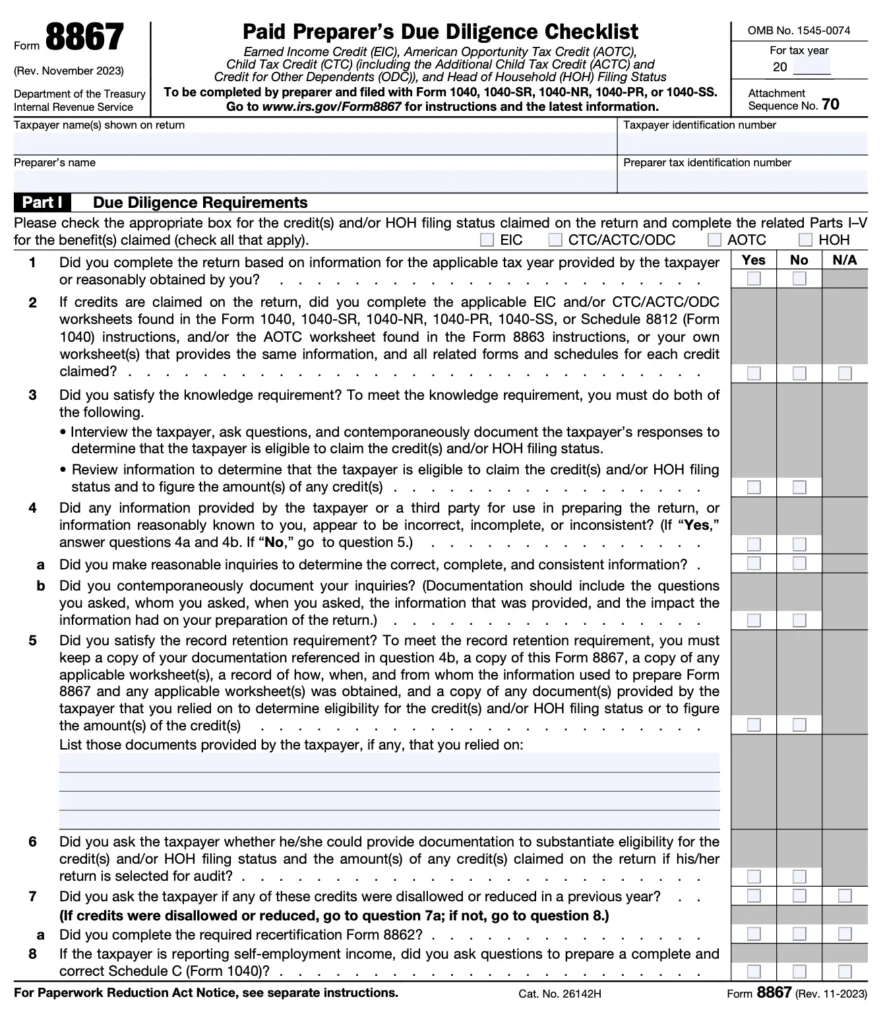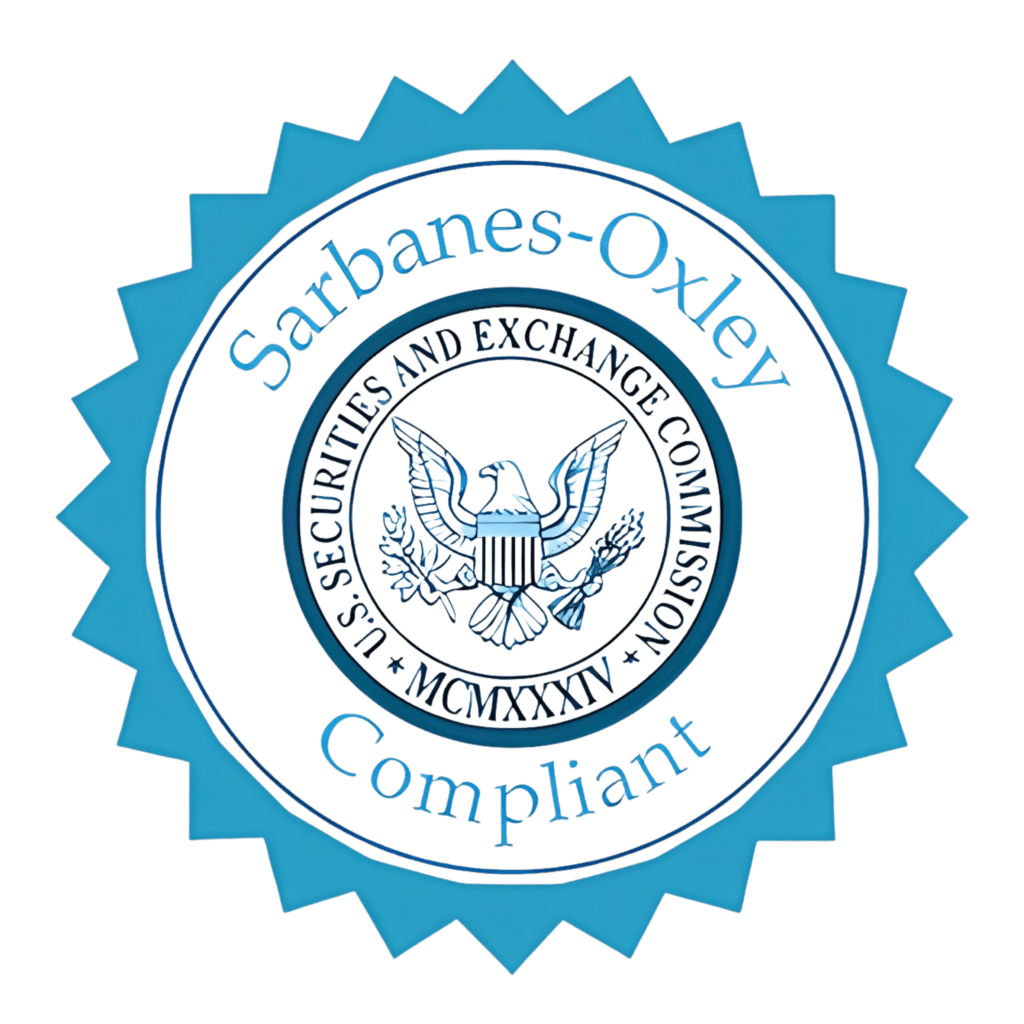Table of Contents
IRS Form 8867 (Paid Preparer’s Due Diligence Checklist) is a mandatory document for tax professionals preparing returns that claim:
- Earned Income Tax Credit (EITC)
- Child Tax Credit (CTC)
- Additional Child Tax Credit (ACTC)
- American Opportunity Tax Credit (AOTC)
- Head of Household filing status
Who Must File Form 8867?
Tax preparers must complete this form if they:
- Are paid to prepare federal tax returns
- File returns claiming any of the above credits
- Want to comply with IRS due diligence requirements
- Need to avoid preparer penalties ($560 per failure)
Important: Even if not claiming credits, maintaining proper documentation is crucial. Professional tax services can help establish compliance procedures.

Step-by-Step Guide to Completing Form 8867
Step 1: Verify Client Eligibility
For each applicable credit:
- Review income thresholds
- Confirm relationship tests
- Check age requirements
- Validate residency status
Step 2: Gather Required Documentation
Prepare:
- Client intake questionnaires
- Proof of income (financial statements, W-2s, 1099s)
- Relationship documentation (birth certificates, school records)
- Residency verification (lease agreements, utility bills)
- Prior year tax returns (if applicable)
Step 3: Complete Part I – Preparer Information
- Line 1a: Preparer’s name and PTIN
- Line 1b: Firm name (if applicable)
- Line 1c: EIN or SSN
- Line 1d: Address and phone number

Step 4: Complete Part II – Credit-Specific Due Diligence
For each credit claimed:
- Line 2: EITC eligibility
- Line 3: CTC/ACTC qualifications
- Line 4: AOTC requirements
- Line 5: Head of Household status
Step 5: Complete Part III – Knowledge Review
- Line 6: Confirm the interview process
- Line 7: Verify documentation review
- Line 8: Assess the reasonableness of information
- Line 9: Document questions resolved
Step 6: Complete Part IV – Record Retention
- Line 10: Check the recordkeeping method
- Line 11: List documents retained
- Line 12: Retention period (3 years minimum)
Step 7: Submit With Tax Return
- Attach to the front of Form 1040
- Keep copies with client files
- Maintain supporting documentation
- File electronically when e-filing returns
Common Mistakes to Avoid
- Missing deadlines – Must be filed with the return
- Incomplete documentation – Must verify all eligibility factors
- Generic checkmarks – Requires specific questions/responses
- Failing to reconcile with financial statements – Must verify income amounts
- Improper record retention – Must keep records for 3+ years
Professional tax services can implement compliance systems for tax practices handling numerous credit claims.
Advanced Considerations
Documentation Standards
- Electronic vs. paper recordkeeping
- Client privacy protections
- Document verification procedures
- Audit defense preparation
Risk Management
- Preparer penalty avoidance
- Reasonable cause defenses
- Continuing education requirements
- Professional liability coverage
Software Integration
- Digital checklist features
- Document management systems
- Automated reminders
- Compliance reporting tools

Final Thoughts
Proper completion of IRS Form 8867 is essential for tax professionals to demonstrate due diligence and avoid substantial penalties. By maintaining thorough documentation processes, verifying all credit eligibility requirements, and carefully following the latest Form 8867 instructions, preparers can protect both their clients and their practices. For firms handling high volumes of credit claims or facing complex client situations, partnering with specialized tax services provides the expertise and systems needed to maintain full compliance while efficiently serving clients.










